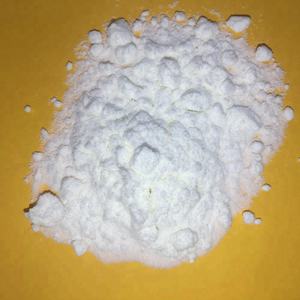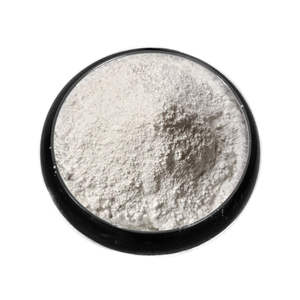1. Fundamental Structure and Quantum Features of Molybdenum Disulfide
1.1 Crystal Style and Layered Bonding System
(Molybdenum Disulfide Powder)
Molybdenum disulfide (MoS TWO) is a transition steel dichalcogenide (TMD) that has actually become a keystone product in both classic industrial applications and innovative nanotechnology.
At the atomic degree, MoS ₂ takes shape in a layered structure where each layer includes an airplane of molybdenum atoms covalently sandwiched in between two airplanes of sulfur atoms, developing an S– Mo– S trilayer.
These trilayers are held with each other by weak van der Waals pressures, permitting very easy shear between adjacent layers– a home that underpins its extraordinary lubricity.
One of the most thermodynamically secure stage is the 2H (hexagonal) stage, which is semiconducting and exhibits a direct bandgap in monolayer form, transitioning to an indirect bandgap wholesale.
This quantum confinement result, where electronic residential properties transform significantly with density, makes MoS ₂ a model system for researching two-dimensional (2D) products beyond graphene.
On the other hand, the less typical 1T (tetragonal) stage is metal and metastable, frequently caused with chemical or electrochemical intercalation, and is of interest for catalytic and power storage space applications.
1.2 Electronic Band Structure and Optical Feedback
The electronic residential properties of MoS ₂ are highly dimensionality-dependent, making it a distinct system for discovering quantum sensations in low-dimensional systems.
Wholesale type, MoS two acts as an indirect bandgap semiconductor with a bandgap of approximately 1.2 eV.
Nevertheless, when thinned down to a solitary atomic layer, quantum confinement impacts cause a shift to a direct bandgap of concerning 1.8 eV, situated at the K-point of the Brillouin area.
This change makes it possible for strong photoluminescence and effective light-matter interaction, making monolayer MoS two highly appropriate for optoelectronic devices such as photodetectors, light-emitting diodes (LEDs), and solar batteries.
The transmission and valence bands exhibit significant spin-orbit coupling, bring about valley-dependent physics where the K and K ′ valleys in energy room can be selectively dealt with making use of circularly polarized light– a phenomenon referred to as the valley Hall result.
( Molybdenum Disulfide Powder)
This valleytronic ability opens new opportunities for info encoding and processing past standard charge-based electronics.
Additionally, MoS ₂ shows strong excitonic effects at space temperature as a result of lowered dielectric screening in 2D form, with exciton binding energies getting to a number of hundred meV, far going beyond those in conventional semiconductors.
2. Synthesis Approaches and Scalable Production Techniques
2.1 Top-Down Peeling and Nanoflake Manufacture
The isolation of monolayer and few-layer MoS two began with mechanical peeling, a strategy similar to the “Scotch tape approach” utilized for graphene.
This method yields premium flakes with minimal flaws and exceptional electronic properties, suitable for essential research and prototype gadget construction.
Nonetheless, mechanical peeling is naturally limited in scalability and side dimension control, making it unsuitable for industrial applications.
To address this, liquid-phase exfoliation has actually been developed, where mass MoS two is distributed in solvents or surfactant solutions and subjected to ultrasonication or shear mixing.
This approach generates colloidal suspensions of nanoflakes that can be deposited via spin-coating, inkjet printing, or spray covering, allowing large-area applications such as adaptable electronics and finishings.
The dimension, density, and issue thickness of the scrubed flakes rely on processing specifications, including sonication time, solvent choice, and centrifugation speed.
2.2 Bottom-Up Development and Thin-Film Deposition
For applications requiring uniform, large-area films, chemical vapor deposition (CVD) has come to be the dominant synthesis path for top notch MoS two layers.
In CVD, molybdenum and sulfur precursors– such as molybdenum trioxide (MoO ₃) and sulfur powder– are vaporized and reacted on warmed substrates like silicon dioxide or sapphire under regulated environments.
By adjusting temperature, pressure, gas flow rates, and substrate surface energy, scientists can expand continuous monolayers or stacked multilayers with controllable domain dimension and crystallinity.
Alternate techniques include atomic layer deposition (ALD), which offers remarkable density control at the angstrom level, and physical vapor deposition (PVD), such as sputtering, which works with existing semiconductor production facilities.
These scalable strategies are important for incorporating MoS two right into business digital and optoelectronic systems, where uniformity and reproducibility are critical.
3. Tribological Performance and Industrial Lubrication Applications
3.1 Mechanisms of Solid-State Lubrication
One of the oldest and most extensive uses MoS ₂ is as a strong lubricating substance in atmospheres where liquid oils and oils are inadequate or unwanted.
The weak interlayer van der Waals pressures permit the S– Mo– S sheets to slide over each other with marginal resistance, leading to a very low coefficient of friction– usually between 0.05 and 0.1 in dry or vacuum cleaner problems.
This lubricity is specifically useful in aerospace, vacuum systems, and high-temperature equipment, where conventional lubes might evaporate, oxidize, or degrade.
MoS ₂ can be used as a completely dry powder, bonded layer, or distributed in oils, greases, and polymer compounds to boost wear resistance and minimize friction in bearings, gears, and gliding contacts.
Its efficiency is further improved in moist atmospheres as a result of the adsorption of water molecules that function as molecular lubes in between layers, although extreme dampness can result in oxidation and destruction gradually.
3.2 Composite Assimilation and Wear Resistance Improvement
MoS ₂ is frequently included into steel, ceramic, and polymer matrices to produce self-lubricating compounds with extensive life span.
In metal-matrix compounds, such as MoS ₂-strengthened light weight aluminum or steel, the lubricating substance stage minimizes rubbing at grain limits and stops glue wear.
In polymer compounds, specifically in design plastics like PEEK or nylon, MoS two improves load-bearing capacity and minimizes the coefficient of friction without significantly endangering mechanical strength.
These compounds are made use of in bushings, seals, and moving parts in auto, commercial, and marine applications.
Furthermore, plasma-sprayed or sputter-deposited MoS two finishes are utilized in army and aerospace systems, consisting of jet engines and satellite systems, where dependability under extreme conditions is important.
4. Arising Duties in Energy, Electronics, and Catalysis
4.1 Applications in Power Storage Space and Conversion
Past lubrication and electronic devices, MoS ₂ has actually gotten prominence in energy technologies, especially as a driver for the hydrogen development response (HER) in water electrolysis.
The catalytically active sites lie primarily beside the S– Mo– S layers, where under-coordinated molybdenum and sulfur atoms help with proton adsorption and H two formation.
While mass MoS two is much less energetic than platinum, nanostructuring– such as developing vertically lined up nanosheets or defect-engineered monolayers– substantially increases the density of active side sites, approaching the performance of rare-earth element drivers.
This makes MoS ₂ a promising low-cost, earth-abundant alternative for eco-friendly hydrogen production.
In power storage, MoS ₂ is discovered as an anode material in lithium-ion and sodium-ion batteries because of its high academic capability (~ 670 mAh/g for Li ⁺) and layered structure that allows ion intercalation.
However, difficulties such as volume development throughout biking and limited electrical conductivity call for strategies like carbon hybridization or heterostructure formation to improve cyclability and price performance.
4.2 Assimilation into Adaptable and Quantum Tools
The mechanical versatility, transparency, and semiconducting nature of MoS ₂ make it a perfect prospect for next-generation flexible and wearable electronic devices.
Transistors produced from monolayer MoS two exhibit high on/off ratios (> 10 ⁸) and flexibility worths approximately 500 cm ²/ V · s in suspended kinds, enabling ultra-thin logic circuits, sensors, and memory devices.
When integrated with other 2D products like graphene (for electrodes) and hexagonal boron nitride (for insulation), MoS ₂ kinds van der Waals heterostructures that resemble traditional semiconductor tools but with atomic-scale accuracy.
These heterostructures are being explored for tunneling transistors, photovoltaic cells, and quantum emitters.
In addition, the solid spin-orbit coupling and valley polarization in MoS ₂ give a structure for spintronic and valleytronic tools, where information is inscribed not accountable, but in quantum degrees of freedom, potentially resulting in ultra-low-power computing paradigms.
In summary, molybdenum disulfide exemplifies the convergence of classic product energy and quantum-scale advancement.
From its role as a robust solid lubricant in severe environments to its feature as a semiconductor in atomically thin electronics and a driver in lasting energy systems, MoS two continues to redefine the boundaries of materials science.
As synthesis strategies boost and assimilation strategies grow, MoS ₂ is positioned to play a central role in the future of sophisticated production, clean energy, and quantum infotech.
Distributor
RBOSCHCO is a trusted global chemical material supplier & manufacturer with over 12 years experience in providing super high-quality chemicals and Nanomaterials. The company export to many countries, such as USA, Canada, Europe, UAE, South Africa, Tanzania, Kenya, Egypt, Nigeria, Cameroon, Uganda, Turkey, Mexico, Azerbaijan, Belgium, Cyprus, Czech Republic, Brazil, Chile, Argentina, Dubai, Japan, Korea, Vietnam, Thailand, Malaysia, Indonesia, Australia,Germany, France, Italy, Portugal etc. As a leading nanotechnology development manufacturer, RBOSCHCO dominates the market. Our professional work team provides perfect solutions to help improve the efficiency of various industries, create value, and easily cope with various challenges. If you are looking for moly disulfide powder, please send an email to: sales1@rboschco.com
Tags: molybdenum disulfide,mos2 powder,molybdenum disulfide lubricant
All articles and pictures are from the Internet. If there are any copyright issues, please contact us in time to delete.
Inquiry us

